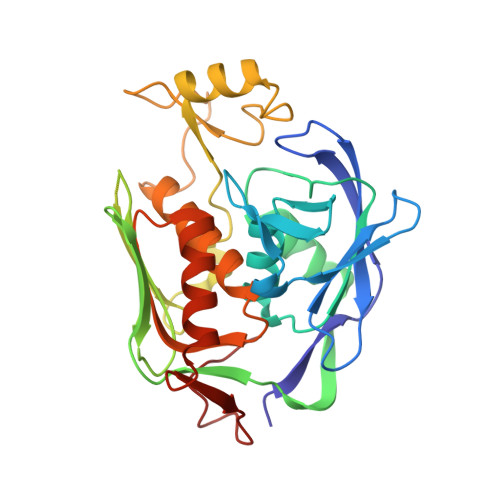Exploring the UDP pocket of LpxC through amino acid analogs.
Hale, M.R., Hill, P., Lahiri, S., Miller, M.D., Ross, P., Alm, R., Gao, N., Kutschke, A., Johnstone, M., Prince, B., Thresher, J., Yang, W.(2013) Bioorg Med Chem Lett 23: 2362-2367
- PubMed: 23499237
- DOI: https://doi.org/10.1016/j.bmcl.2013.02.055
- Primary Citation of Related Structures:
4J3D - PubMed Abstract:
Lipopolysaccharide (LPS) biosynthesis is an attractive antibacterial target as it is both conserved and essential for the survival of key pathogenic bacteria. Lipid A is the hydrophobic anchor for LPS and a key structural component of the outer membrane of Gram-negative bacteria. Lipid A biosynthesis is performed in part by a unique zinc dependent metalloamidase, LpxC (UDP-3-O-(R-3-hydroxymyristoyl)-N-acetylglucosamine deacetylase), which catalyzes the first non-reversible step in lipid A biosynthesis. The UDP portion of the LpxC substrate-binding pocket has been relatively unexplored. We have designed and evaluated a series of hydroxamate based inhibitors which explore the SAR of substitutions directed into the UDP pocket with a range of substituted α-amino acid based linkers. We also provide the first wild type structure of Pseudomonas aeruginosa LpxC which was utilized in the design of many of these analogs.
- Infection Innovative Medicines Unit, AstraZeneca R&D Boston, 35 Gatehouse Drive, Waltham, MA 02451, USA. michael.hale@astrazeneca.com
Organizational Affiliation:


















